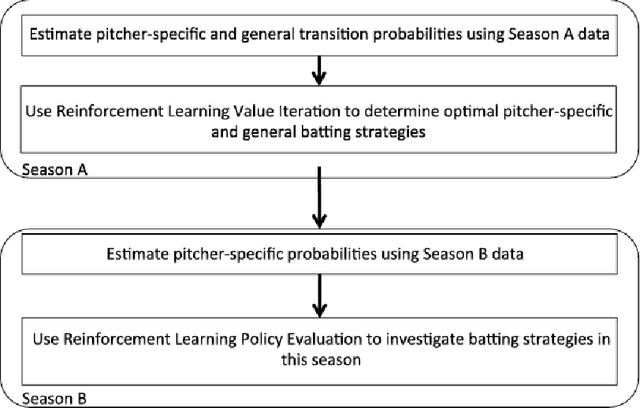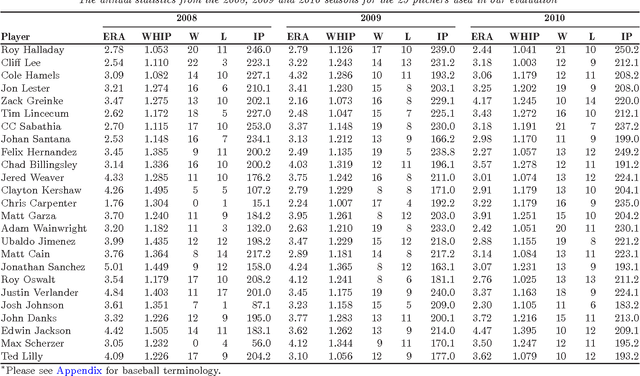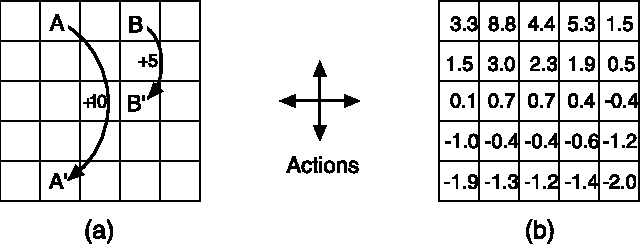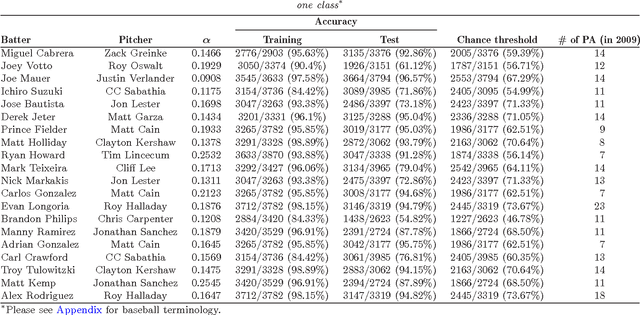Gagan Sidhu
Locally Linear Embedding and fMRI feature selection in psychiatric classification
Sep 06, 2019


Abstract:Background: Functional magnetic resonance imaging (fMRI) provides non-invasive measures of neuronal activity using an endogenous Blood Oxygenation-Level Dependent (BOLD) contrast. This article introduces a nonlinear dimensionality reduction (Locally Linear Embedding) to extract informative measures of the underlying neuronal activity from BOLD time-series. The method is validated using the Leave-One-Out-Cross-Validation (LOOCV) accuracy of classifying psychiatric diagnoses using resting-state and task-related fMRI. Methods: Locally Linear Embedding of BOLD time-series (into each voxel's respective tensor) was used to optimise feature selection. This uses Gau\ss' Principle of Least Constraint to conserve quantities over both space and time. This conservation was assessed using LOOCV to greedily select time points in an incremental fashion on training data that was categorised in terms of psychiatric diagnoses. Findings: The embedded fMRI gave highly diagnostic performances (> 80%) on eleven publicly-available datasets containing healthy controls and patients with either Schizophrenia, Attention-Deficit Hyperactivity Disorder (ADHD), or Autism Spectrum Disorder (ASD). Furthermore, unlike the original fMRI data before or after using Principal Component Analysis (PCA) for artefact reduction, the embedded fMRI furnished significantly better than chance classification (defined as the majority class proportion) on ten of eleven datasets Interpretation: Locally Linear Embedding appears to be a useful feature extraction procedure that retains important information about patterns of brain activity distinguishing among psychiatric cohorts.
* Main article is 10 pages. Supplementary Information is 15 pages, and includes figures/results for six additional datasets, w/ performance plots (as a function of dimensionality 'd'), proportion(s) of brain regions defined by the respective atlases, subject ID partitioning for all eleven datasets. Additional figures, including the statistical volumes and GraphViz model, available in first DOI
MONEYBaRL: Exploiting pitcher decision-making using Reinforcement Learning
Jul 31, 2014



Abstract:This manuscript uses machine learning techniques to exploit baseball pitchers' decision making, so-called "Baseball IQ," by modeling the at-bat information, pitch selection and counts, as a Markov Decision Process (MDP). Each state of the MDP models the pitcher's current pitch selection in a Markovian fashion, conditional on the information immediately prior to making the current pitch. This includes the count prior to the previous pitch, his ensuing pitch selection, the batter's ensuing action and the result of the pitch.
* Published in at http://dx.doi.org/10.1214/13-AOAS712 the Annals of Applied Statistics (http://www.imstat.org/aoas/) by the Institute of Mathematical Statistics (http://www.imstat.org)
Instant Replay: Investigating statistical Analysis in Sports
Oct 11, 2011Abstract:Technology has had an unquestionable impact on the way people watch sports. Along with this technological evolution has come a higher standard to ensure a good viewing experience for the casual sports fan. It can be argued that the pervasion of statistical analysis in sports serves to satiate the fan's desire for detailed sports statistics. The goal of statistical analysis in sports is a simple one: to eliminate subjective analysis. In this paper, we review previous work that attempts to analyze various aspects in sports by using ideas from Markov Chains, Bayesian Inference and Markov Chain Monte Carlo (MCMC) methods. The unifying goal of these works is to achieve an accurate representation of the player's ability, the sport, or the environmental effects on the player's performance. With the prevalence of cheap computation, it is possible that using techniques in Artificial Intelligence could improve the result of statistical analysis in sport. This is best illustrated when evaluating football using Neuro Dynamic Programming, a Control Theory paradigm heavily based on theory in Stochastic processes. The results from this method suggest that statistical analysis in sports may benefit from using ideas from the area of Control Theory or Machine Learning
 Add to Chrome
Add to Chrome Add to Firefox
Add to Firefox Add to Edge
Add to Edge